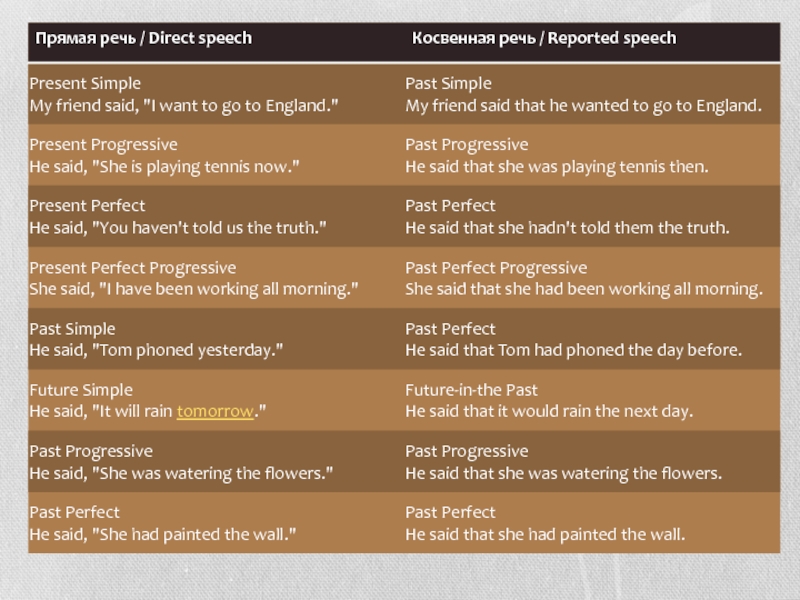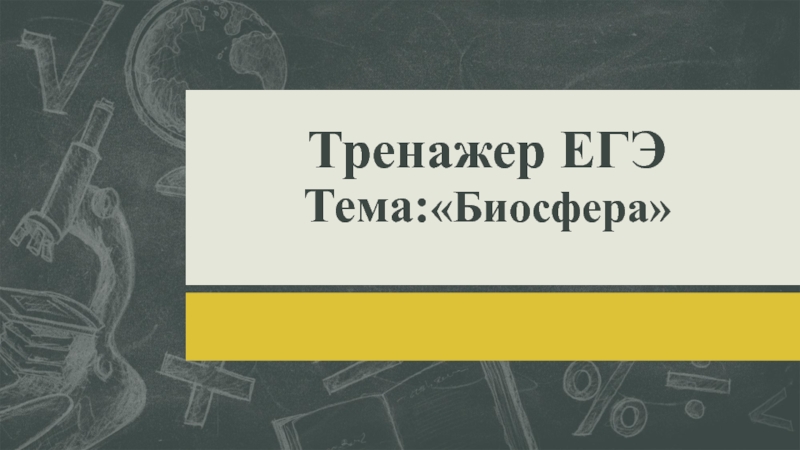Разделы презентаций
- Разное
- Английский язык
- Астрономия
- Алгебра
- Биология
- География
- Геометрия
- Детские презентации
- Информатика
- История
- Литература
- Математика
- Медицина
- Менеджмент
- Музыка
- МХК
- Немецкий язык
- ОБЖ
- Обществознание
- Окружающий мир
- Педагогика
- Русский язык
- Технология
- Физика
- Философия
- Химия
- Шаблоны, картинки для презентаций
- Экология
- Экономика
- Юриспруденция
Systematization of grammar: sequence of tenses theme : The classification of
Содержание
- 1. Systematization of grammar: sequence of tenses theme : The classification of
- 2. Согласование времен/ Sequence of tensesСогласование времен —
- 3. Если действие придаточного предложения происходит одновременно с
- 4. Если действие придаточного предложения предшествует действию главного,
- 5. Если действие придаточного предложения является будущим
- 6. Слайд 6
- 7. Таблица изменений указательных местоимений и наречий при переводе прямой речи в косвенную
- 8. В русском языке нет правила согласования времен,
- 9. The classification of the toothTeeth of humans
- 10. A tooth may have multiple roots or
- 11. Teeth are classified as incisors, canines, premolars,
- 12. There are several different notation systems to
- 13. THANK YOU!!!
- 14. Скачать презентанцию
Согласование времен/ Sequence of tensesСогласование времен — это зависимость времени глагола придаточного предложения от времени глагола главного предложения.Если глагол-сказуемое главного предложения стоит в одной из форм прошедшего времени — то глагол-сказуемое
Слайды и текст этой презентации
Слайд 1Made by: Tastimirova D
2-006stomatology
Systematization of grammar: sequence of tenses
theme:The
classification of the tooth.
foreign languagesСлайд 2Согласование времен/ Sequence of tenses
Согласование времен — это зависимость времени
глагола придаточного предложения от времени глагола главного предложения.
Если глагол-сказуемое главного
предложения стоит в одной из форм прошедшего времени — то глагол-сказуемое придаточного предложения (в основном изъяснительного) тоже стоит в одной из форм прошедшего времени.She asked what he was doing in her room. — Она спросила, что он делает в ее комнате.
Не said that he knew my friend. — Он сказал, что он знает моего друга.
Слайд 3Если действие придаточного предложения происходит одновременно с действием главного, то
глагол придаточного предложения употребляется в Past Simple или Past Progressive.
Не
said that they played football on Sundays. — Он сказал, что они играют в футбол по воскресеньям.
She said that he was reading a newspaper. — Она сказала, что он читает газету.
Слайд 4Если действие придаточного предложения предшествует действию главного, то глагол придаточного
предложения употребляется в Past Perfect.
Не said that Тот had phoned
the day before. — Он сказал, что Том звонил вчера / накануне.Слайд 5 Если действие придаточного предложения является будущим по отношению к
действию главного предложения, то глагол придаточного предложения употребляется в форме
Future-in-the Past (см. Грамматический справочник).Не said that he would help him. — Он сказал, что поможет ему.
Слайд 8 В русском языке нет правила согласования времен, поэтому при переводе
на русский язык в придаточном предложении глагол может оставаться в
той форме, в которой он стоял в прямой речи.Не said, "I know Mary."— Он сказал: "Я знаю Мэри".
Не said that he knew Mary. — Он сказал, что он знает Мэри.
Не said, "I knew Mary."— Он сказал: "Я знал Мэри".
Не said that he had known Mary. — Он сказал, что он знал Мэри когда-то.
She said, "They are having dinner."— Она сказала: "Они обедают".
She said that they were having dinner. — Она сказала, что они обедают.
































